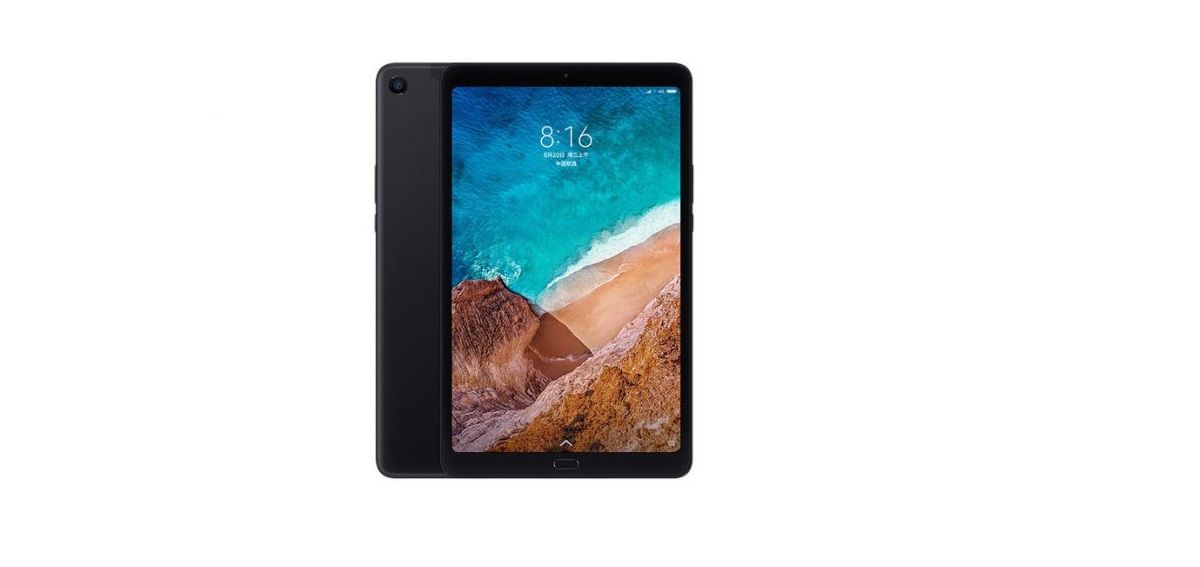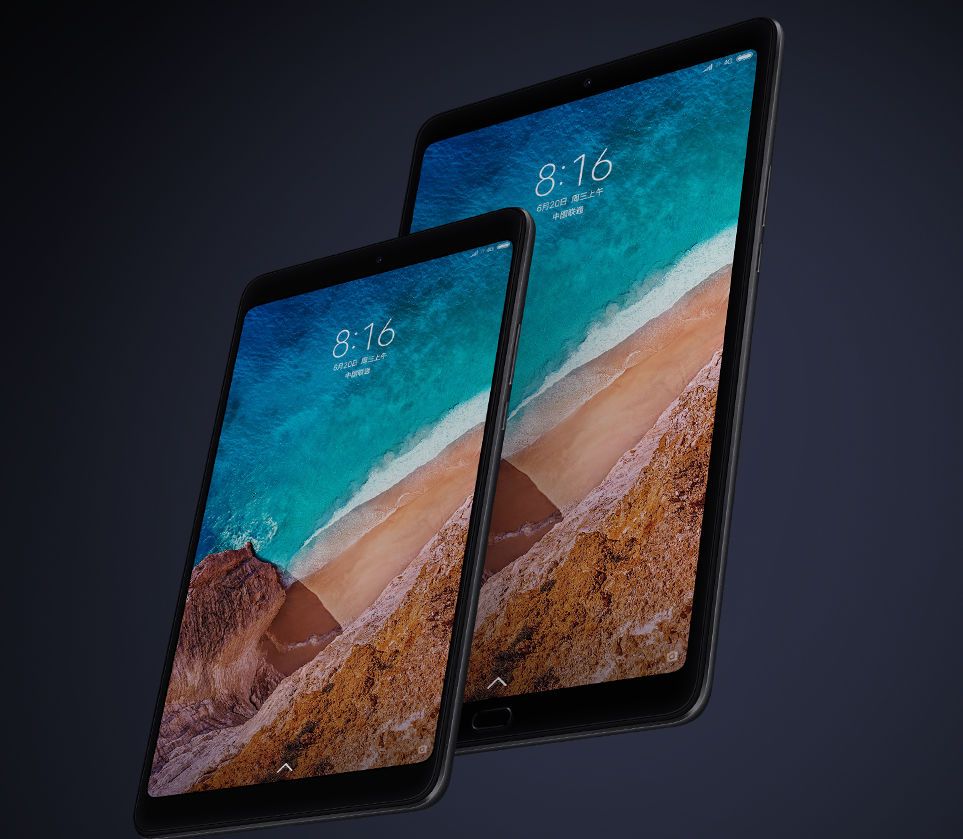The Xiaomi Mi Pad series of affordable tablets has always provided great value in terms of specifications and pricing. Availability of the Mi Pad series can be an issue as Xiaomi tends to sell them mostly in China, but they remain the go-to choice for buyers looking for an affordable Android tablet that does not have outdated specifications. The Xiaomi Mi Pad 4 was launched in China in June as the latest iteration of the Mi Pad series with an 8-inch WUXGA (1920x1200) IPS display and the Qualcomm Snapdragon 660 SoC. Now, Xiaomi has made the Xiaomi Mi Pad 4 Plus official.
The Mi Pad 4 Plus is a 10-inch version of the Mi Pad 4. Interestingly, it's Xiaomi's first 10-inch tablet, as the Mi Pad, Mi Pad 2, Mi Pad 3, and the Mi Pad 4 all have 8-inch displays. The Mi Pad 4 did switch from a 4:3 aspect ratio to a 16:10 display aspect ratio, and the Mi Pad 4 Plus also has a 16:10 aspect ratio display. Let's take a look at its specifications:
Xiaomi Mi Pad 4 Plus - Specifications at a glance
|
Specifications |
Xiaomi Mi Pad 4 Plus |
|---|---|
|
Dimensions and weight |
245.6 x 149.08 x 7.99 mm, 485g |
|
Software |
MIUI 9 on top of Android 8.1 Oreo |
|
SoC |
Octa-core Qualcomm Snapdragon 660 (4x 2.2GHz Kryo 260 Performance cores + 4x 1.8GHz Kryo 260 Efficiency cores); Adreno 512 GPU |
|
RAM and storage |
4GB of LPDDR4X RAM with 64GB/128GB storage |
|
Battery |
8,620mAh, 5V/2A charging |
|
Display |
10.1-inch WUXGA (1920x1200) IPS LCD with 16:10 aspect ratio, 224 PPI |
|
Connectivity |
Wi-Fi 802.11ac, Bluetooth 5.0 |
|
Ports |
USB Type-C port, 3.5mm headphone jack; Nano SIM slot |
|
Bands |
FDD-LTE: Bands 1/3/5/7/8TDD-LTE: Bands 34/38/39/40/41 |
|
Rear camera |
13MP with OmniVision OV13855 sensor, f/2.0 apertureVideo recording up to 1080p at 30fps |
|
Front-facing camera |
5MP with Samsung S5K5E8 sensor, f/2.0 aperture |
Just like the Mi Pad 4, the Mi Pad 4 Plus also has metal unibody construction. The 10.1-inch form factor with narrow side bezels makes it look similar to the Samsung Galaxy Tab S4, a high-end Android tablet which is significantly more expensive. The metal construction on the Mi Pad 4 Plus should ensure great build quality. The tablet doesn't seem to be too heavy on paper with a weight of 485 grams.
The Xiaomi Mi Pad 4 Plus also has a front-mounted fingerprint sensor, which is a nice improvement over the standard Mi Pad 4.
Performance
The Mi Pad 4 Plus doesn't upgrade the Mi Pad 4's SoC. Instead, it's powered by the same Qualcomm Snapdragon 660 SoC. This is a bit disappointing to hear in light of the recent Qualcomm Snapdragon 670 announcement last week. Xiaomi could even have gone with the Snapdragon 710, which was announced in May. As it is, the Mi Pad 4 Plus still features a capable SoC, but it's no longer the latest-generation mid-range SoC.
The Snapdragon 660 has four big cores in the form of the Kryo 260 Performance (Arm Cortex-A73) clocked at 2.2GHz, paired with four Kryo 260 Efficiency (Cortex-A53) cores clocked at 1.8GHz. It features the Adreno 512 GPU. Going with the Snapdragon 670 would have led to increased single-core CPU performance as well as better GPU performance.
The Mi Pad 4 Plus does upgrade the storage configurations over the Mi Pad 4. The Mi Pad 4 came in two variants: 3GB of RAM with 32GB of storage, and 4GB of RAM with 64GB of storage. The Mi Pad 4 Plus, on the other hand, features 4GB of RAM and has two storage options: 64GB/128GB.
Display
The Mi Pad 4 Plus has a 10.1-inch WUXGA (1920x1200) IPS LCD with 16:10 aspect ratio and 224 PPI. It's not as sharp as the Galaxy Tab S4's WQXGA AMOLED display, but display quality should still be good. The display's contrast ratio is rated at 1000:1. The one negative point here is the aspect ratio, which isn't particularly suited for productivity tasks and portrait tablet usage. A 4:3 aspect ratio with 2048x1536 pixels would have made a better compromise for productivity tasks and media consumption.
Connectivity
The tablet is powered by a big 8,620mAh battery. There is no mention of quick charging support. In terms of connectivity, the Mi Pad 4 Plus features LTE as a standard feature, whereas the Mi Pad 4 came in a separate LTE variant. All other options remain standard: Wi-Fi 802.11b/g/n/ac, Bluetooth 5.0, a USB Type-C port, and a 3.5mm headphone jack.
Software
The Xiaomi Mi Pad 4 Plus is powered by MIUI 9 on top of Android 8.1 Oreo. MIUI 10 beta builds should be available shortly, and the tablet is expected to receive the MIUI 10 update in the coming months.
Pricing and availability
The Xiaomi Mi Pad 4 Plus comes in Black and Golden colors. It costs CNY 1,899 ($275) for the 4GB RAM/64GB storage varant, while the 4GB RAM/128GB storage variant costs CNY 2,099 ($304). It will go on sale in China starting August 16th on Mi.com.


